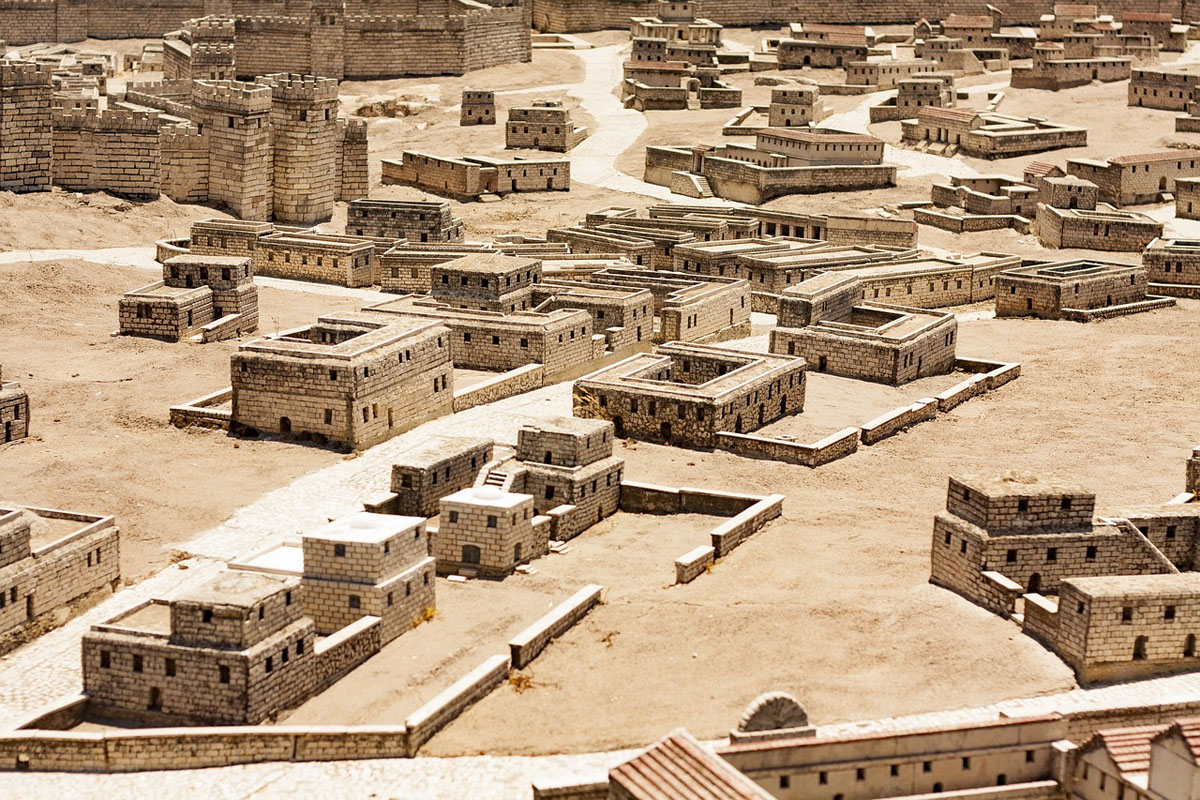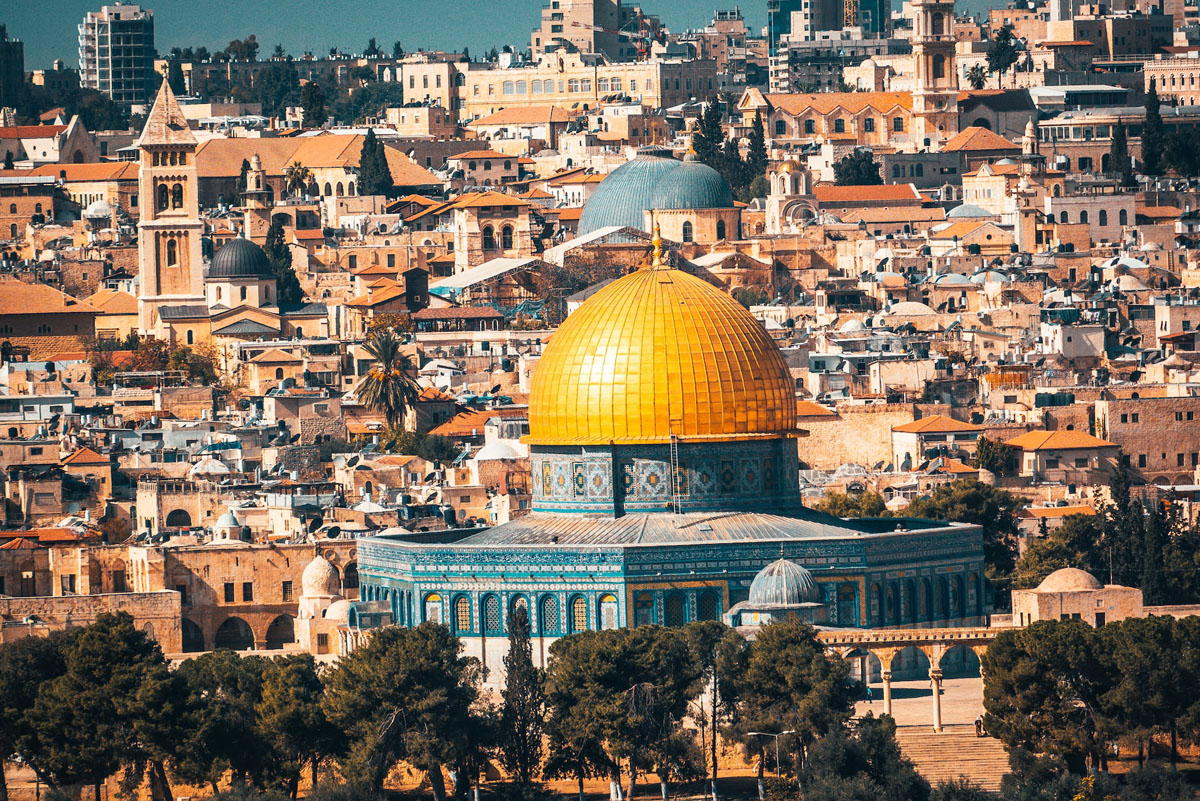Israel, a nation situated in the Middle East on the eastern coast of the Mediterranean Sea, boasts a rich and intricate history that spans several millennia. From ancient civilizations to contemporary conflicts, the narrative of Israel is multifaceted and complex.
Ancient Israel
The historical origins of Israel can be traced back to antiquity, as evidenced by the Hebrew Bible and archaeological findings. The narrative of Israel commences with the patriarch Abraham, who is revered as the progenitor of the Jewish people. Abraham’s descendants, including his son Isaac and grandson Jacob (also known as Israel), served as the foundation for the Twelve Tribes of Israel.
The Exodus and Conquest (circa 13th century BCE)
The biblical account of the Exodus recounts the emancipation of the Israelites from bondage in Egypt, led by the esteemed figure of Moses. Following a forty-year sojourn in the desert, they eventually entered the Promised Land of Canaan. The conquest of Canaan marked the initiation of Israelite settlement in the region.
The United Kingdom (circa 11th-10th century BCE)
During the reigns of King Saul, King David, and King Solomon, Israel experienced a period of unity and prosperity. David established Jerusalem as the capital city, while Solomon constructed the First Temple. However, subsequent to Solomon’s demise, the kingdom underwent a division, resulting in the formation of Israel (the northern kingdom) and Judah (the southern kingdom) due to political and religious tensions.

Assyrian and Babylonian Exiles (8th-6th century BCE)
The Assyrian and Babylonian exiles, which took place during the 8th to 6th century BCE, were significant events in ancient history. In 722 BCE, the Assyrians successfully conquered the northern kingdom of Israel, resulting in the exile of the ten northern tribes. Subsequently, in 586 BCE, the Babylonians captured Jerusalem, leading to the destruction of the First Temple and the exile of the remaining tribes.
Second Temple Period
Persian Rule (6th-4th century BCE)
During the Second Temple Period, which spanned from the 6th to the 4th century BCE, Persian rule was established after the Babylonian exile. Under Persian rule, a portion of the Jewish population returned to Jerusalem and undertook the task of rebuilding the Second Temple. This period also witnessed the compilation of the Hebrew Bible and the emergence of various Jewish religious texts and practices.
Hellenistic and Seleucid Rule (4th-2nd century BCE)
In the 4th to 2nd century BCE, Israel came under the influence of Hellenistic culture following the conquests of Alexander the Great. The attempts made by Antiochus IV to Hellenize Judea resulted in the Maccabean Revolt, which ultimately led to the establishment of the Hasmonean dynasty.
Roman Rule (1st century BCE – 1st century CE)
In the year 63 BCE, the region of Judea was brought under the governance of the Roman Empire. King Herod the Great, who was a client king of Rome, initiated a series of ambitious construction projects, including the renovation of the Second Temple. During this era, Jesus of Nazareth emerged as a prominent religious figure, establishing the foundations of Christianity, which would later diverge from Judaism.
Roman and Byzantine Period
Jewish Revolts (1st-2nd century CE)
Judea experienced two significant uprisings against Roman rule: the First Jewish-Roman War (66-73 CE) and the Bar Kokhba Revolt (132-136 CE). Both of these rebellions were brutally suppressed, resulting in extensive destruction and significant loss of life.
Spread of Christianity (1st-4th century CE)
Christianity gradually spread throughout the Roman Empire, eventually becoming the official religion of the empire under the reign of Emperor Constantine. This had a profound impact on the Jewish community, leading to their increasing marginalization.
Medieval and Ottoman Period
Byzantine and Arab Rule (4th-7th century)
The Medieval and Ottoman periods in the region of Palestine are characterized by distinct historical events and political regimes. During the 4th to 7th century, the Eastern Roman Empire, also known as the Byzantine Empire, maintained control over the area following the collapse of the Western Roman Empire. However, in the 7th century, the region was conquered by Arab Muslims, who introduced Islam to the region.
Crusader Period (11th-13th century)
In the 11th to 13th century, the region became a significant focal point of the Crusades, with Christian Crusaders establishing various states, including the Kingdom of Jerusalem. These Crusader states were eventually reclaimed by Muslim forces.
Ottoman Rule (16th-20th century)
From the 16th to the 20th century, the region came under Ottoman rule. During this period, the Jewish population in Palestine remained a minority, and Jews, Christians, and Muslims coexisted, albeit not always peacefully.
Zionism and Modern Israel
Emergence of Zionism (19th-20th century)
During the late 19th century, the Zionist movement, under the leadership of prominent figures such as Theodor Herzl, emerged with the objective of establishing a Jewish homeland in Palestine. This movement gained significant traction, particularly in Europe, in response to the prevailing anti-Semitic persecution.
British Mandate (1920-1948)
Following the conclusion of World War I, the League of Nations entrusted Britain with the mandate to govern Palestine. This period witnessed a rise in tensions between the Jewish and Arab communities, ultimately resulting in violent clashes and conflicts.
Israeli Independence (1948)
In 1947, the United Nations endorsed a partition plan that aimed to divide Palestine into separate Jewish and Arab states. On May 14, 1948, David Ben-Gurion officially declared the establishment of the State of Israel. The partition plan faced opposition from Arab nations, leading to the Arab-Israeli War of 1948-1949.
Arab-Israeli Conflicts (20th-21st century)
Israel has encountered numerous conflicts with neighboring Arab states, including the Suez Crisis (1956), Six-Day War (1967), and Yom Kippur War (1973). These conflicts have significantly influenced regional dynamics and resulted in territorial alterations.
The Peace Process and Contemporary Challenges
Efforts towards achieving peace, such as the Camp David Accords (1978) and Oslo Accords (1993), were undertaken with the objective of establishing a durable peace between Israel and Palestine. However, the attainment of peace continues to remain elusive due to persistent disputes concerning borders, settlements, and the status of Jerusalem.

Modern Israel
Socio-Economic Development
Despite encountering various obstacles, Israel has managed to cultivate a robust economy, a thriving technological sector, and a vibrant cultural milieu. The demographic landscape of the nation has been shaped by Jewish immigration, including significant waves from the former Soviet Union and Ethiopia.
Security Challenges and Peace Endeavors
Israel has confronted security threats emanating from militant groups such as Hamas and Hezbollah. The pursuit of peace, although ongoing, has been complicated by deeply entrenched historical and political complexities.
Contemporary Issues
Contemporary matters encompass contentious discussions surrounding settlements, the status of Jerusalem, the establishment of a Palestinian state, and the persistent Israeli-Palestinian conflict. Furthermore, Israel confronts international examination regarding its policies and activities within the occupied territories.
Post-Oslo Era and Peace Process (1990s-2000s)
Subsequent to the Oslo Accords, a period of sanguinity emerged in the 1990s with regards to the Israeli-Palestinian peace process. Regrettably, this sanguinity was shattered by significant events such as the assassination of Prime Minister Yitzhak Rabin in 1995 and the collapse of peace negotiations in 2000 following the unsuccessful Camp David Summit.
Second Intifada (2000-2005)
The Second Intifada, a period marked by escalated violence between Palestinians and Israelis, erupted in 2000. This period was characterized by suicide bombings, targeted assassinations, and incursions, resulting in substantial loss of life on both sides. The violence eventually subsided due to a multitude of factors, including Israeli military actions and the establishment of a security barrier in the West Bank.
Disengagement from Gaza (2005)
In 2005, Israel unilaterally withdrew its military forces and settlers from the Gaza Strip, a strategic move aimed at advancing the cause of peace. However, this withdrawal inadvertently led to the ascendance of Hamas, an Islamist militant group, in Gaza, thereby presenting a fresh set of challenges to regional stability.
Gaza Wars and Conflict with Hamas
The ongoing conflict between Israel and Hamas, the militant Palestinian organization, has given rise to multiple wars and persistent tensions, particularly in the Gaza Strip. This conflict can be traced back to the Israeli-Palestinian conflict, which emerged in the mid-20th century due to disputes over territory, borders, and sovereignty.
Hamas, established in 1987, is widely recognized as a terrorist organization by numerous countries and international entities, including the United States, the European Union, Israel, Canada, and others. The group’s armed faction, known as the Izz ad-Din al-Qassam Brigades, has been actively involved in various confrontations with Israel, primarily through the launching of rockets into Israeli territory and engaging in armed clashes.
The most notable instances of conflict between Israel and Hamas in the Gaza Strip include Operation Cast Lead in 2008-2009, Operation Pillar of Defense in 2012, and Operation Protective Edge in 2014. These military operations resulted in significant loss of life and extensive destruction on both sides, with civilians often bearing the brunt of the violence.
The conflict has persisted with intermittent escalations and periods of relative calm, often punctuated by ceasefires brokered by various mediators. Despite ongoing efforts to achieve a lasting peace solution in the region, a comprehensive resolution to the Israeli-Palestinian conflict remains elusive.
Peace Agreements with Arab States
In the year 2020, Israel achieved a historic milestone by signing normalization agreements with the United Arab Emirates and Bahrain, collectively known as the Abraham Accords. These agreements signify a noteworthy shift in regional diplomacy, prompting other Arab nations to express their interest in establishing diplomatic ties with Israel. This development has the potential to reshape the political landscape of the Middle East.
Contemporary Challenges and Humanitarian Issues
Presently, Israel faces various challenges, including the expansion of settlements in the West Bank, disputes concerning the status of Jerusalem, and the blockade imposed on the Gaza Strip. Humanitarian concerns, such as the limited access to essential resources in Gaza and the restrictions on the movement of Palestinians, persist as significant issues in the ongoing conflict.
The Prospects for Peace and the Two-State Solution
The pursuit of a lasting peace between Israelis and Palestinians persists, with the international community largely advocating for a two-state solution, wherein Israel and a future Palestinian state coexist harmoniously and securely. However, the path towards this resolution remains uncertain, as deep-seated historical, political, and religious factors continue to complicate the process.
Cultural and Scientific Advancements
Despite the obstacles, Israel has made significant contributions to various fields, including technology, medicine, and the arts. Israeli innovations in areas such as cybersecurity, agriculture, and renewable energy have garnered international recognition, positioning Israel as a global leader in technological advancements.
Diverse Society and Religious Pluralism
Israel is a diverse society, encompassing individuals from various religious and ethnic backgrounds, including Jews, Arabs, Druze, and Bedouins. Religious pluralism and coexistence present both challenges and opportunities, shaping the nation’s identity and social fabric.
The Dome of the Rock is a significant religious and historical monument situated in Jerusalem, Israel. It holds a prominent position on the Temple Mount, which is revered as one of the most sacred sites in Judaism, Christianity, and Islam. As an Islamic shrine, the Dome of the Rock is widely regarded as one of the most exemplary instances of Islamic architecture worldwide.
The construction of the Dome of the Rock was completed in 691 CE, rendering it one of the oldest surviving Islamic structures. The edifice is distinguished by its expansive golden dome and intricate tilework, standing as a testament to the brilliance of Islamic architectural craftsmanship.
The Dome of the Rock carries varying degrees of significance for different religious groups
Islam: Muslims attach immense religious importance to the Dome of the Rock. It is believed to be the site from which the Prophet Muhammad ascended to heaven during the Night Journey, thus ranking it as the third holiest site in Islam, following Mecca and Medina.
Judaism: For Jews, the Temple Mount holds the utmost sanctity, as it is believed to be the location of the First and Second Temples, both of which were razed in ancient times. However, Jews are prohibited from praying within the confines of the Dome of the Rock. Instead, the Western Wall, a retaining wall of the Temple Mount, is considered the most sacred accessible site for Jewish prayer.
Christianity: Although the Dome of the Rock itself does not possess specific religious significance in Christianity, the entire vicinity, including the nearby Al-Aqsa Mosque, is deemed significant in Christian tradition due to its association with events in the life of Jesus Christ.
Over the years, the Dome of the Rock and its surrounding area have been a source of tension and conflict among various religious and political factions. This reflects the intricate and deeply entrenched historical and religious divisions within the region.





